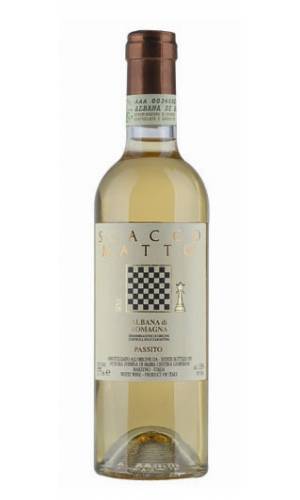The first written sources mentioning this vine date back to the work Ruralium, Commodorium Books, by Pietro de' Crescenzi (1490), but a credible theory states it goes back to the Latin name of the Colli Albani, thus attesting its presence in the area already in the times of ancient Rome. Currently, the homeland of this grape is Emilia Romagna, and in particular the territory in the provinces of Forlì, Ravenna, Rimini, Bologna and Modena, although it is widespread, in reduced form, up to and the Marche and Tuscany regions. The bunches are large, cylindrical and compact, with grapes that are thick-skinned and greenish-yellow tending to amber.

The wine is the result of the fermentation of the best Albana grapes from the vineyard Laghetto...